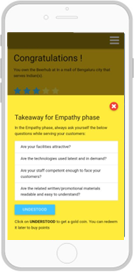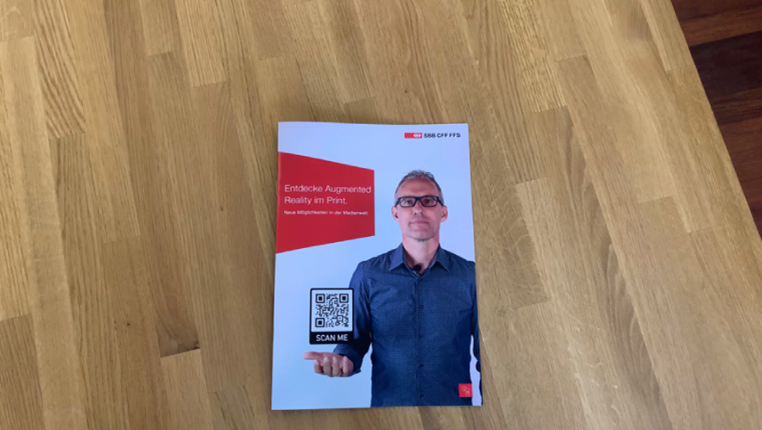
The constantly changing work paradigm has spawned a need from employees – learning resources to support their workflow. Learning in the flow of work (LIFOW) aims to support that need. In this article, I highlight how you can leverage it to your advantage.
What Is Learning in the Flow of Work?
In today’s highly competitive instant-messaging era, the flow of work is relentless. Between meeting project deadlines, responding to text messages and emails, and attending meetings, employees have few opportunities to enhance existing skills and learn new ones. To learn, the learners do not want to step out of work – they want to be able to access just-in-time learning resources when they want to learn – within their workflow.
LIFOW advocates that for continuous learning to happen, the learning resources must be available within the learner’s workflow.
Why Is Learning in the Flow of Work a Must-use Strategy?
It’s a proven fact that employees learn best in an environment where they expect to apply that learning – at work. The 70:20:10 rule also underscores how L&D directly contributes to on-the-job performance.
The distinction between where work starts and where it ends is a blur. Employees are likely to work “after hours,” and co-mingle personal chores during “work hours.” As a result, workplaces are changing the traditional definition of “workflow.”
Unless organizations embrace LIFOW strategies, both employees and L&D teams will face a challenge setting defined “learning time.”
- Because LIFOW puts learning at the crossroads of working and learning, it’s an ideal strategy to support corporate learning in the workplace.
- In LIFOW, learning integrates itself within the natural flow of work, so employees won’t have to carve out a specific time to learn.
The Benefits of Learning in the Flow of Work
Implementing learning in the flow of work brings a variety of positive outcomes for both employees and businesses, ensuring a future-ready workforce. Here’s how it enhances ROI and fosters a culture of continual learning:
-
Enhanced Engagement:
Employee engagement grows when learning is linked to real-world experiences, making it more applicable and practical for daily tasks, thereby boosting retention.
-
Increased Productivity:
By incorporating training into everyday tasks, employees may pick up new skills and put them to use at the same time, leading to immediate gains in productivity and efficiency.
-
Cost Efficiency:
By integrating learning into everyday responsibilities, businesses minimize training costs and optimize resource allocation, ensuring ROI remains high.
-
Immediate Application:
Skills applied right away enhance recall and understanding, ensuring that learning translates directly into improved performance.
-
Better Performance:
Continuous learning enables individuals to excel in their roles, contributing to overall business success and long-term profitability.
-
Higher Job Satisfaction:
Providing learning opportunities encourages employee growth and retention.
-
Greater Efficiency:
By strengthening information retention, contextual learning raises workplace performance and operational efficiency.
-
Culture of continual Learning:
This strategy encourages employees to view lifelong learning as a core value, fostering a resilient workforce prepared for future challenges and innovations.
Do Learners Want Learning in the Flow of Work Now?
The short answer: Yes!
Recent trends indicate a shift toward integrating learning seamlessly into daily tasks. Between the periods before and after recent global disruptions, synchronous learning, encompassing On-the-Job Training (OJT) and On-the-Job Coaching (OJC), decreased from a majority to a significant portion.
Additionally, almost 80% of learners prefer at least one mode of sync learning – and the results show why that’s the case. Almost 50% of those learners, who received some form of sync learning, found their training to be highly effective. Compared to that, less than 30% of those who experienced non-synchronous learning found their training to be effective.
Seeing the effectiveness of learning in the flow of work, it’s therefore not surprising that though only 31% of learners indicated OJT as a preference, nearly 35% of them received training through that mode. OJT, which includes elements of LIFOW, was the second most popular (32%) training delivery method, after Instructor-Led Training (57%).
How Does Learning in the Flow of Work?
In a non-LIFOW model, learning typically happens well in advance of its actual application. Usually, by then, because of the “Forgetting Curve,” most learners scramble to recall how to apply past knowledge to a present work situation. LIFOW happens at the point of need. As employees encounter a task-related challenge at work, they endeavor to learn more about how to address it. This sets them off on a learning journey that aligns with their workflow. The just-in-time nature of LIFOW ensures better knowledge transference into the real world.
How Does Learning in the Flow of Work Happen in Practice?
Learning in the flow of work (LIFOW) increases productivity by incorporating high-quality learning resources into routine activities. L&D teams can accomplish this by utilizing microlearning modules and performance support tools that provide on-demand data. This technique reduces cognitive load while encouraging experiential learning, allowing employees to quickly comprehend and apply newly acquired skills in real-world situations.
Understanding learners’ motives and preferences is critical. Organizations promote a culture of continuous learning by customizing programs to different learning preferences. Furthermore, leadership support and feedback mechanisms encourage reflection and development, ensuring that learning is integrated into the work experience and fosters individual and organizational progress.
Challenges that Affect Learning In the Flow of Work Approach
While the flow of work approach offers many advantages for employee learning, a number of difficulties might hamper its efficacy and hinder the overall learning experience.
-
Distractions and Time Constraints:
Interruptions and excessive workloads could impede employees’ ability to focus on learning and manage daily responsibilities.
-
Limited Resource Access:
Employees working from different locations might find it difficult to access learning tools and resources.
-
Varied Learning Preferences:
Developing a one-size-fits-all learning solution might be challenging due to employees’ diverse learning preferences.
-
Integration with Existing Workflows:
Successfully integrating learning resources into current workflows can be tough and may need major adaptations.
-
Lack of Leadership Support:
Without strong management support, learning initiatives may struggle to gain momentum and distribute resources.
-
Cognitive Overload:
Employees who become overwhelmed with knowledge may find it difficult to retain and use newly acquired skills.
-
Inadequate Feedback Mechanisms:
When employees do not receive timely feedback, they are unable to understand and enhance their performance.
-
Cultural Resistance:
Some employees may oppose new learning methods and favor old training procedures.
What Design Considerations Should You Adopt to Enable Learning in the Flow of Work?
Because LIFOW is a strategy that caters to an anytime, anywhere model of learning, the traditional “push” approach to learning won’t work. L&D teams will fail if they decide where, what, and how employees must learn.
Instead, include the following pillars as part of your LIFOW design:
-
Accessible and Inclusive:
Design learning content to be highly accessible, ensuring it meets the needs of all employees, including those with diverse backgrounds and abilities. Incorporate principles of Diversity, Equity, and Inclusion (DEI) to foster a learning environment that respects and includes everyone.
-
On-demand:
Include responsive designs to enable on-demand consumption of learning content, anytime, anywhere, and on any device. This flexibility supports learners in accessing information when they need it most, enhancing learning effectiveness and adaptability.
-
Customized learning paths:
Make sure your design caters to the learners’ ability to customize their own learning paths. This approach allows them to focus on relevant skills and knowledge tailored to their roles, career aspirations, and cross-domain interests.
-
Carefully Curated Content:
Ensure the design taps into uniquely curated content, preferably influenced by learner objectives. Utilize advanced technologies such as nano learning and cross-domain information to provide targeted and up-to-date resources that support continuous learning in diverse subject areas.
Remember: The glue that holds these individual design considerations together is learner support. Ensure you design has adequate support structures for all learners when and where they need it.
How to Leverage LIFOW in Your Employee Training?
A good LIFOW program leverages multiple performance support and improvement dimensions:
-
To drive deliberate practice:
All formal trainings are time-constrained. LIFOW can leverage opportunities for employees to safely, without considerable risk, practice further and hone some skills that were introduced through formal training sessions.
-
To reinforce learning:
LIFOW can leverage opportunities for remote employees to continually review, revise, refresh, and reinforce skills and concepts learned during formal training.
-
To offset the Forgetting Curve:
Learners often forget “stuff” when there’s a lag between formal learning and instances where employees apply those skills to workplace challenges. As part of a LIFOW strategy, Just-in-Time (JIT) learning, featuring “How to” tools and other job aids, helps learners “remember.”
-
To improve the application of learning on the job:
Through extended training, employees learn performance improving knowledge. Learning in the flow of work strategies help translate that learning into the workforce.
-
To teach new concepts and for skill building:
In a workplace, where trainers, mentors, and supervisors may not always be available to assist employees when a need arises, LIFOW helps employees quickly acquire new skills in the moment of their need.
What Strategies Should You Adopt to Enable LIFOW?
A comprehensive LIFOW program involves implementing multiple strategies. Some of these include:
-
Microlearning:
Bite-sized (shorter) learning content is ideal for learning in the moment of need.
-
mLearning:
Leveraging small footprint content, which is mobile-friendly, enables learning anytime and anywhere.
-
VBL/IVBL:
Both Video Based Learning (VBL) and Interactive Video Based Learning (IVBL) facilitate on-the-job learning by acting as Performance Support Tools (PSTs). They also serve as great Microlearning resources as part of broader learning in the flow of work strategies.
-
PSTs/Job aids:
In busy workplaces, pausing work to learn isn’t an option. Performance Support Tools (PSTs) and other job aids (PDF documents, “How to…” videos, Cheat Sheets, Templates) are great LIFOW strategies.
-
Content curation:
The hallmark of an effective LIFOW program is to quickly empower employees with the learning they need just in time. Having well-curated, efficiently indexed, and intuitively collated content can further the goals of any LIFOW strategy.
-
Social learning:
The 70:20:10 rule tells us that not all learning happens through formal training, or only in the workplace. Learning in the flow of work examples, where learners learn outside of the workplace from peers and groups of social networks, work well for such learners.
-
User Generated Content (UGC):
LIFOW can leverage UGC to aid employees to tap into experiences of colleagues and peers.
-
Immersive Learning:
Incorporating immersive technologies such as virtual reality (VR) and augmented reality (AR) also provides realistic and engaging learning experiences that simulate real-world scenarios and environments.
To get the most out of any LIFOW program, it’s vital to underpin these strategies with feedback loops that allow a two-way exchange of views between L&D teams and learners. It also helps to implement frequent check-ins with learners. Finally, because LIFOW is often time-sensitive, providing learners access to Subject Matter Experts (SMEs) can further cement the successful implementation of a FIFO strategy.
Best Practices for Embedding Learning in the Flow of Work
Organizations can apply several best practices to optimize the efficacy of learning in the workplace, including seamlessly integrating training into everyday tasks and increasing employee engagement.
- Reduce Barriers to Access: Make instructional materials easily accessible to employees.
- Integrate with Existing Technology: Make use of the platforms and tools available today to create a seamless learning experience and blend in with everyday responsibilities.
- Make It Hyper-Relevant: Content should be specifically crafted to correspond with employees’ daily tasks to maximize applicability and engagement.
- Utilize Concise, Visual Content: To promote rapid information intake and retention, make use of concise, visually appealing content.
- Evaluate Learning Needs: To enable focused content production, carry out regular assessments to pinpoint precise learning requirements.
- Align with Work Tasks: Create learning exercises with a clear connection to job-related tasks to ensure that they are promptly applicable.
- Offer On-Demand Performance Support: Give team members readily available tools and resources to refer to as needed in order to reinforce learning.
- Create a Robust Corporate Learning Culture: Encourage employees to view lifelong learning as a core principle by creating a working environment that supports it.
- Promote Peer Learning: Provide employees with opportunities to exchange experiences and expertise, which will improve group learning and problem-solving.
- Make Use of Feedback Loops: Establish systems for regularly receiving feedback on learning initiatives so that material may be adjusted and improved upon continuously.
- Encourage Microlearning: To make learning more manageable and less overwhelming, divide training into bite-sized modules that can be finished in shorter sessions.
- Apply gamification: Challenges, incentives, and progress monitoring may be used to motivate employees while enhancing learning through the use of game elements.
Now let’s review some real-world learning in the flow of work examples to highlight the application of the concepts discussed above.
Examples of Learning in the Flow of Work
Here are a few learning in the flow of work examples that will help shed light on how LIFOW works in real life:
Example 1: Mobile App-based Learning
To help restaurant staff enhance their customer servicing skills, we transformed traditional summative assessments into interactive games delivered through a native iOS and Android app. Personalized learning is achieved through city selection and entering the restaurant name, making the learning experience relevant and context-specific.
When learners launch the game, they navigate through a series of customer scenarios, receiving immediate reinforcement and feedback. This innovative approach seamlessly integrates training into daily activities, ensuring staff can develop their skills effectively and in real time.
Example 2: Video Nuggets
A series of short videos were crafted to help learners grasp the quality management system by following a character through their daily tasks related to quality, using storytelling to boost engagement and comprehension.
This technique ensures that learners can review essential information on quality management in a relatable and memorable way. Additionally, the content is available at learners’ fingertips and presented concisely, making it easy to access and retain.
Example 3: AR-powered Product Manual
To promote just-in-time support, AR-powered product manuals were developed for railway construction staff. Utilizing QR codes, this technology eliminates the need for a separate app. Upon scanning, learners can instantly access AR-based video content that facilitates an immersive exploration of critical components. This method offers a seamless experience and reduces the need to navigate extensive documents.
Example 4: Virtual Assistant
EI’s very own Virtual Assistant, Emma, is a responsive avatar that delivers on-demand information about our organization in several immersive formats that are optimized for mobile devices. This allows our employees as well as customers to access on-demand information anytime, anywhere.
Parting Thoughts
Not all on-the-job performance situations are learned during formal training. Neither do most employees remember what they’ve learned 12 months ago during a two-day training event. I hope the learning in the flow of work examples showcased above prove that when performance matters at the time and place of need, LIFOW helps bridge the knowledge gaps that would otherwise lead to subpar job outcomes.
Meanwhile, if you have any specific queries, do contact me or leave a comment below.










